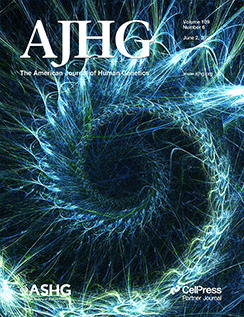通过rna测序数据的基因组相互作用编码图像表示揭示组织异质性。
IF 8.1
1区 生物学
Q1 GENETICS & HEREDITY
引用次数: 0
摘要
基因组测序对生物医学研究和临床实践都至关重要。虽然单细胞RNA测序(scRNA-seq)提供了对细胞水平生物过程的深入了解,但大量RNA测序因其可扩展性和成本效益而被广泛使用。为了探索生物异质性,研究人员努力从大量样品中推断单细胞样细胞成分,即将大量样品反卷积成多种细胞类型。然而,现有的反卷积方法面临两个主要限制:(1)依赖于预定义的基因特征矩阵,而没有考虑样本间的可变性;(2)生物系统中对噪声的敏感性。在这里,我们提出了一个细胞成分分析(CCA)框架,通过利用RNA-seq数据的基因组相互作用编码图像表示来大大改进模式发现。该框架结合了样本特异性基因表达变异性,并通过使用卷积变分自编码器和高斯混合模型派生签名模式。然后,基于这些样本特异性、可解释的基因特征模式,对大量RNA-seq数据进行图像域线性分解,用于CCA和其他下游任务,如癌症亚型分类和生物标志物发现。我们通过使用模拟和实验数据集证明,与现有技术相比,所提出的技术在平均Pearson相关性方面提高了14.1%以上的分解精度。该方法为组织异质性分析提供了有效的解决方案,并为一系列临床和生物学应用奠定了基础。本文章由计算机程序翻译,如有差异,请以英文原文为准。
Unveiling tissue heterogeneity through genomic interaction-encoded image representation of RNA-sequencing data.
Genomic sequencing is essential for both biomedical research and clinical practice. While single-cell RNA sequencing (scRNA-seq) provides insights into biological processes at the cellular level, bulk RNA sequencing remains widely used for its scalability and cost-effectiveness. To explore biological heterogeneity, research efforts have been made toward inferring single-cell-like cellular compositions from bulk samples, i.e., deconvolving bulk samples into multiple cell types. However, existing deconvolution methods face two major limitations: (1) reliance on predefined gene signature matrices without accounting for inter-sample variability and (2) susceptibility to noise within biological systems. Here, we propose a cellular-component analysis (CCA) framework by leveraging a genomic-interaction-encoded image representation of RNA-seq data for substantially improved pattern discovery. The framework incorporates sample-specific gene-expression variability and derives signature patterns by utilizing a convolutional variational autoencoder and Gaussian mixture model. An image-domain linear decomposition of bulk RNA-seq data based on these sample-specific, interpretable gene-signature patterns is then performed for CCA and other downstream tasks, such as cancer subtype classification and biomarker discovery. We demonstrate that the proposed technique improves decomposition accuracy by over 14.1% in average Pearson correlation compared to existing techniques by using both simulation and experimental datasets. This approach offers an effective solution for tissue heterogeneity analysis and lays a foundation for a range of clinical and biological applications.
求助全文
通过发布文献求助,成功后即可免费获取论文全文。
去求助
来源期刊
CiteScore
14.70
自引率
4.10%
发文量
185
审稿时长
1 months
期刊介绍:
The American Journal of Human Genetics (AJHG) is a monthly journal published by Cell Press, chosen by The American Society of Human Genetics (ASHG) as its premier publication starting from January 2008. AJHG represents Cell Press's first society-owned journal, and both ASHG and Cell Press anticipate significant synergies between AJHG content and that of other Cell Press titles.

 求助内容:
求助内容: 应助结果提醒方式:
应助结果提醒方式:


